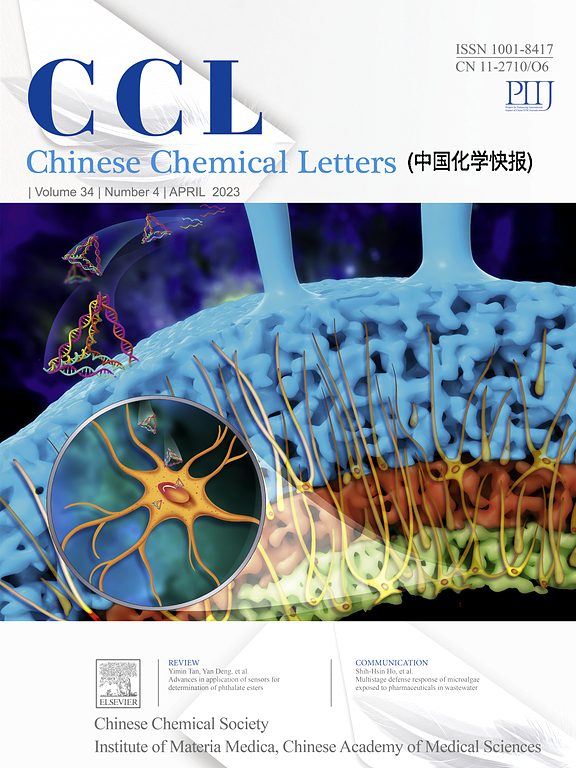Advances in photocatalytic deracemization of sp3-hybridized chiral centers via hydrogen atom transfer
IF 9.4
1区 化学
Q1 CHEMISTRY, MULTIDISCIPLINARY
引用次数: 0
Abstract
The enantioselective separation of racemate, particularly those containing C(sp3)-H bonds knowns for their high bond dissociation energies and significant polarity, presents a significant challenge in pharmaceutical synthesis. Recent advances have witnessed the fusion of photocatalysis with hydrogen atom transfer (HAT) methodologies, marking a notable trend in synthesis of chiral molecules. This technique uses the excitation of a catalyst to activate substrates, enabling the selective isomerization of chiral centers containing C(sp3) configurations. This process distinctively facilitates the direct activation of the C(sp3)-H bond in targeted reagents. This review systematically discusses the photocatalytic isomerization of various chiral molecule featuring C(sp3)-H centers, capable of undergoing deracemization through two primary HAT mechanisms: direct and indirect pathways. From the perspective of synthetic organic chemistry, this field has progressed towards the development of isomerization strategies for molecules that incorporate an activating group at the α-position adjacent to the C(sp3) chiral center. Moreover, it covers methodologies applicable to molecules characterized by specific C-C and C-S bond configurations. The integration of photocatalysis with HAT technology thus provides valuable strategies for the synthesis of enantiopure compounds with enhanced selectivity and efficiency.

利用氢原子转移光催化sp3杂化手性中心去消旋的研究进展
外消旋体的对映选择性分离,特别是含有C(sp3)-H键的对映选择性分离,是药物合成中的一个重大挑战。近年来,光催化与氢原子转移(HAT)方法的融合,标志着手性分子合成的一个显著趋势。该技术利用催化剂的激发来激活底物,使含有C(sp3)构型的手性中心选择性异构化。这一过程显著地促进了靶试剂中C(sp3)-H键的直接激活。本文系统地讨论了各种具有C(sp3)-H中心的手性分子的光催化异构化,这些手性分子能够通过直接和间接两种主要的HAT机制进行去消旋。从合成有机化学的角度来看,这一领域已经朝着在靠近C(sp3)手性中心的α-位置加入活化基团的分子异构化策略发展。此外,它还涵盖了适用于具有特定C-C和C-S键构型的分子的方法。因此,光催化与HAT技术的结合为合成具有更高选择性和效率的对映纯化合物提供了有价值的策略。
本文章由计算机程序翻译,如有差异,请以英文原文为准。
求助全文
约1分钟内获得全文
求助全文
来源期刊

Chinese Chemical Letters
化学-化学综合
CiteScore
14.10
自引率
15.40%
发文量
8969
审稿时长
1.6 months
期刊介绍:
Chinese Chemical Letters (CCL) (ISSN 1001-8417) was founded in July 1990. The journal publishes preliminary accounts in the whole field of chemistry, including inorganic chemistry, organic chemistry, analytical chemistry, physical chemistry, polymer chemistry, applied chemistry, etc.Chinese Chemical Letters does not accept articles previously published or scheduled to be published. To verify originality, your article may be checked by the originality detection service CrossCheck.
 求助内容:
求助内容: 应助结果提醒方式:
应助结果提醒方式:


